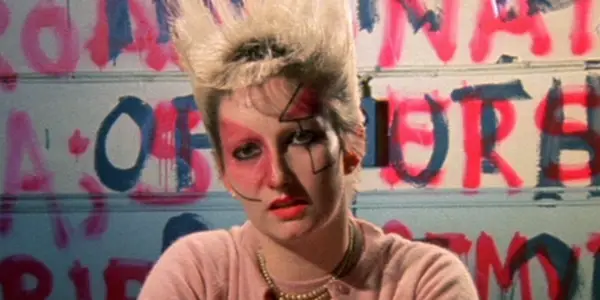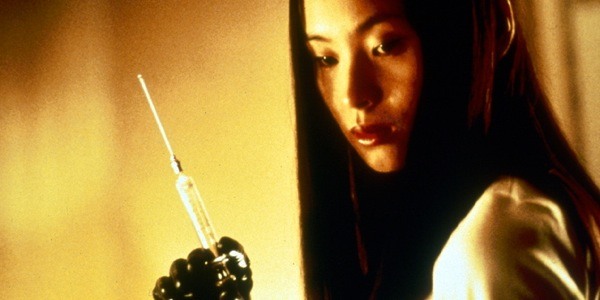How Does Movies Form of Art for Human Experience
Now, what might this diatribe be with a title like that? Well, to reasonably intermission it downward, a essential element to this discussion first needs to be divers: art. Fine art is a very simple word to pronounce, though one of the hardest ideas to pin down. The more encompassing the discussion, the more ambiguous its significant. Traditionally, art encompasses the combination of skill and creativity which produce work appreciated for aesthetic or emotional resonance. At least, that'south what a grade schoolhouse art history volume might say. Art every bit a concept should not be regulated to the elementary parameters involving the products of creativity, and more encompassing the total latitude of the human experience.
At present, how does any of this little rambling thus far relate to movies? Well, most importantly, filmmaking is one of the nigh unique experiences that humans can engage in as not only does it combine about every existing traditional art course and communication into 1, but also a brand new phonetic and visual language is produced which can be understood universally across all preexisting cultural and social barriers. All varieties of man expression has at present been given a tangible face. For this series of manufactures, the primary focus will exist anarchy as fine art, or artistic anarchy.
Artistic Chaos: What Is It?
Anarchy, by its lexicon definition, is classified as a state of disorder due to absence or non-recognition of authorization. Only applying this idea to art is oftentimes left to how the artist treats the cultural and social world from which they jump.

What I hateful by this is that filmmaking is dynamic. Every motion-picture show screams to the audience in many different tones, tongues, and dissimilar styles, moods, and a unlike attitude to that of the i coming earlier and after it. If we go beyond the typical groaning and whining that originality is not alive in fine art today, the reaction to this 'unoriginality' in it of itself is an original thought.
The original thought is the depth of individual perspective. Though it might exist a retread or a remake of an idea, private perspective is molded and expressed in a reactionary form. To elaborate, a picture can push button the audience into places mentally that are uncomfortable and challenging, or to insulate them in areas that are cheery and safe. Regardless where it lands on your private spectrum, this is a reaction to the motion picture. This relationship with the audience is a very personal one as moving picture is usually the most directly reaction to the culture surrounding its creation and exhibition.
How Is This Bluster Relevant?
Every bit a result of the constant tug-of-state of war between the reactionary worlds of the film and the audience, the artform constantly changes and evolves. Mass taste dictate the winners and losers of each era in pic, though this undoubtedly changes with the passage of time and the revisions of each society. Through technical skill and proficiency on set and in the editing room, the technology that has fabricated film non only accessible to almost every person, merely has besides democratized the playing field for distribution and exhibition. This opens upward so many avenues to budgeted moviemaking that the possibilities are actually grossly underappreciated and almost incommunicable to completely comprehend.

However, this current era in filmmaking is the paradigm of a singular idea: Nosotros forget that as art changes, the artist must change with it.
Let the states say that art is indeed the combined effort of arts and crafts and imagination, which is molded by each artist's interaction with their pedagogy, relationships and ultimately their perspective of the world and themselves. With such a powerful combination of character traits and modes of expression, art by its very existence (in all forms, but especially in filmmaking) must stress the limits, pushing the course, the creator and the audience to a signal of no return and so to charge beyond it.
Then What Films Embody Creative Anarchy?
We've arrived at the last purpose of this serial, to find out exactly how this concept has been and can be practical in practice. What movies and filmmakers are the epitome of artistic anarchy? Equally our minds evolve, equally our rationale changes, so, by the laws of nature and civilisation, should the medium change. And these evolutions, some obvious and felt the world over, to those more nuanced and complex, shall exist discussed and debated in length in the following installments.

Every bit we parse the minds and movies that have come up to embody the truthful chaos that we every bit a species exist in perpetuity, understand that filmmaking needs to continue to mature. This is not a movement, nor (necessarily) a political or social statement told through film. It is the natural modus operandi of the medium, and it exists in some of the most unlikely of places. Welcome to Anarchic Cinema.
What films practise you think can be considered Anarchic Cinema? Please share your thoughts in the comments below!
Does content similar this affair to you?
Get a Member and support film journalism. Unlock access to all of Flick Inquiry`s great articles. Join a community of like-minded readers who are passionate virtually cinema - get admission to our private members Network, give back to contained filmmakers, and more.
Join now!
harrislearallings.blogspot.com
Source: https://www.filminquiry.com/anarchic-cinema-introduction/
0 Response to "How Does Movies Form of Art for Human Experience"
Post a Comment